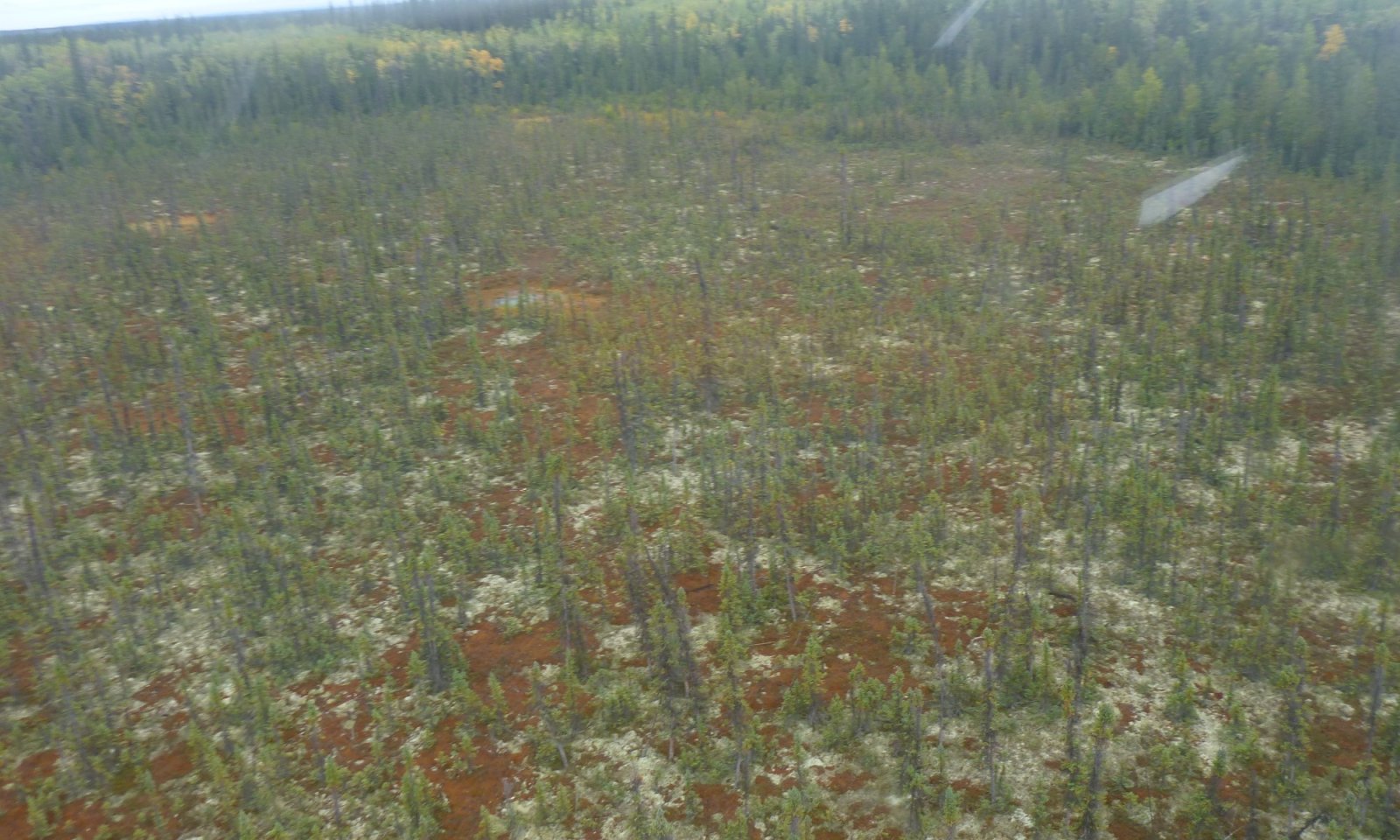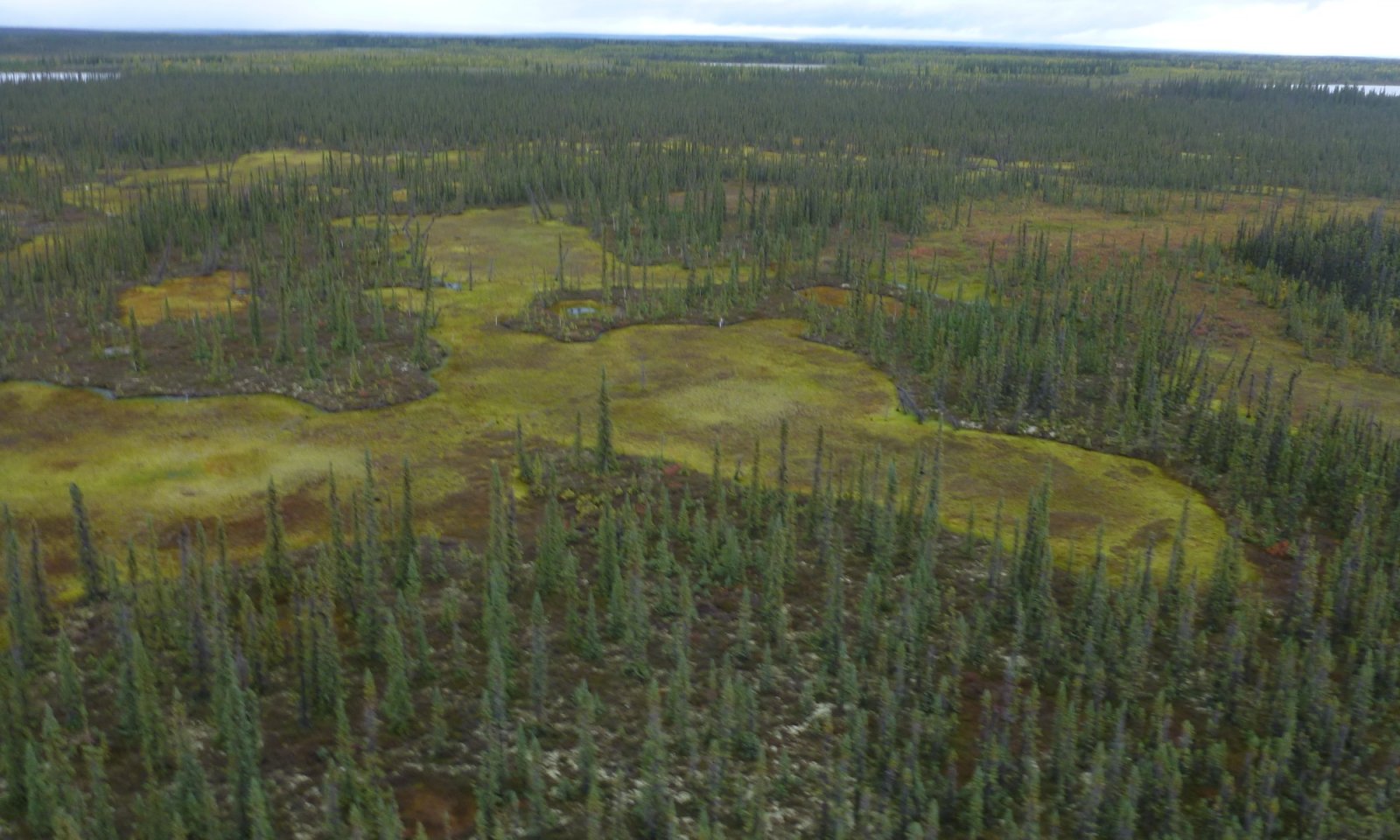
Boreal Woodland Peat Frozen Terraces
Scenario model
Current ecosystem state
Select a state
Management practices/drivers
Select a transition or restoration pathway
- Transition T1a More details
- Restoration pathway R2a More details
-
No transition or restoration pathway between the selected states has been described
Target ecosystem state
Select a state
Description
The reference state has three associated plant communities. The plant communities are grouped by the structure and dominance of the vegetation (e.g., coniferous trees, deciduous trees, shrubs, and forbs) and their ecological function and stability. Plant communities in the reference state appear to be largely controlled by the influences of fire.
This report provides baseline vegetation inventory data for the ecological site. More data collection is needed to provide further information about existing plant communities and the disturbance regimes that would result in transitions from one community to another. The common and scientific plant names are from the USDA PLANTS database. All communities in this report are characterized using the Alaska Vegetation Classification (Viereck et al. 1992).
Submodel
Description
Thermokarst occurs due to thawing of permafrost after fire events. The collapse of adjacent vegetation into thermokarst depressions was commonly observed and many depressions are actively growing in size. While thermokarst can be readily observed, details related to thermokarst succession are poorly understood. The thermokarst state currently has one associated plant community. After an unknown timeframe, thermokarst depressions could theoretically revert back to plant communities associated with the reference state. Due to this uncertainty, a restoration pathway back to the reference state was included in the state-and-transitional model (R2a). For more information on thermokarst in boreal forests, refer to the publication by Smith et al. 2008.
Future data collection efforts and research would likely enhance information about existing plant communities within this state and allow for better understanding of the potential transitions from one community or state to another.
Submodel
Mechanism
Thermokarst. Ice-rich permafrost thaws and vegetation collapses into a depression. In boreal forests, fire is commonly linked to thermokarst (Smith et al. 2008).
Model keys
Briefcase
Add ecological sites and Major Land Resource Areas to your briefcase by clicking on the briefcase (![]() ) icon wherever it occurs. Drag and drop items to reorder. Cookies are used to store briefcase items between browsing sessions. Because of this, the number of items that can be added to your briefcase is limited, and briefcase items added on one device and browser cannot be accessed from another device or browser. Users who do not wish to place cookies on their devices should not use the briefcase tool. Briefcase cookies serve no other purpose than described here and are deleted whenever browsing history is cleared.
) icon wherever it occurs. Drag and drop items to reorder. Cookies are used to store briefcase items between browsing sessions. Because of this, the number of items that can be added to your briefcase is limited, and briefcase items added on one device and browser cannot be accessed from another device or browser. Users who do not wish to place cookies on their devices should not use the briefcase tool. Briefcase cookies serve no other purpose than described here and are deleted whenever browsing history is cleared.
Ecological sites
Major Land Resource Areas
The Ecosystem Dynamics Interpretive Tool is an information system framework developed by the USDA-ARS Jornada Experimental Range, USDA Natural Resources Conservation Service, and New Mexico State University.


